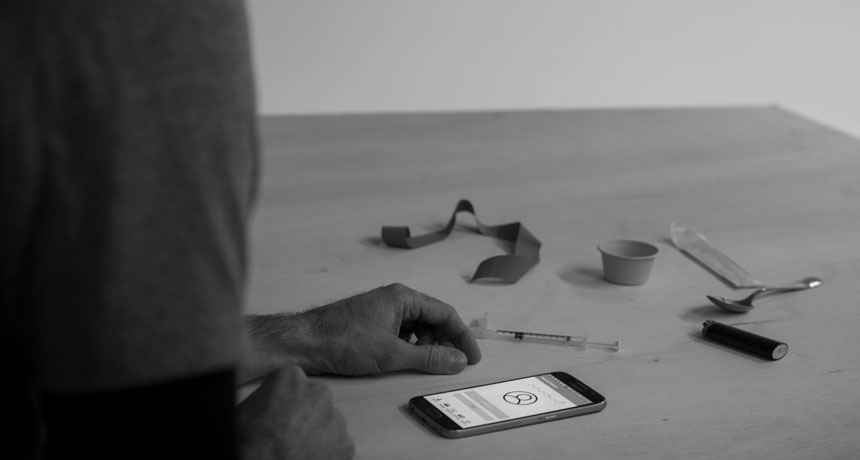A new app tracks breathing to detect an opioid overdose
Called Second Chance, the smartphone application could call for help in an emergency

OVERDOSE OVERSIGHT Smartphones could provide people who inject opioids alone a way to ask for help in the event of an overdose.
Mark Stone/Univ. of Washington
A new smartphone app may help people who shoot up alone get medical treatment if they accidentally overdose.